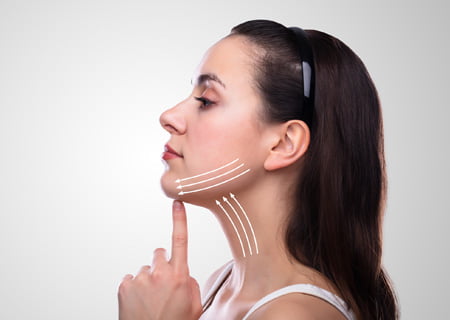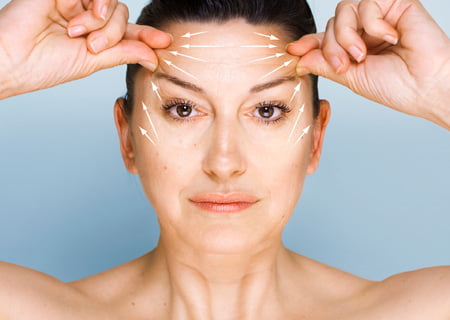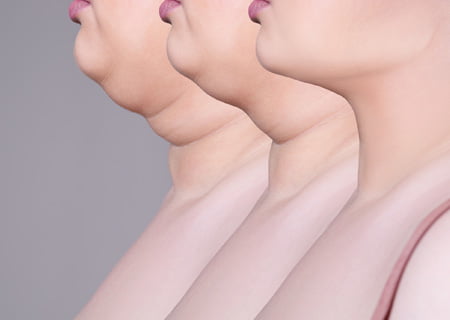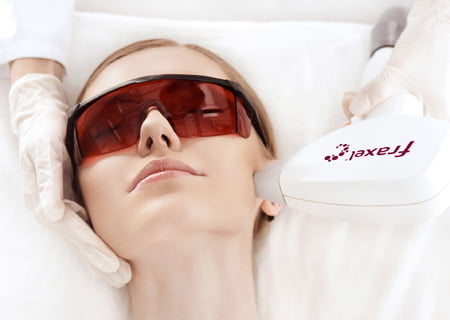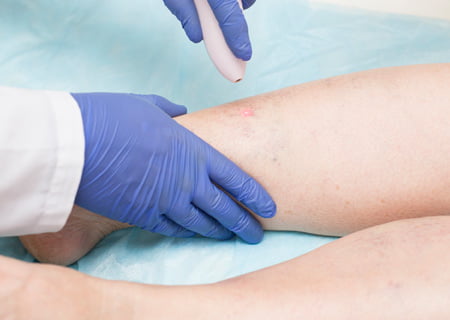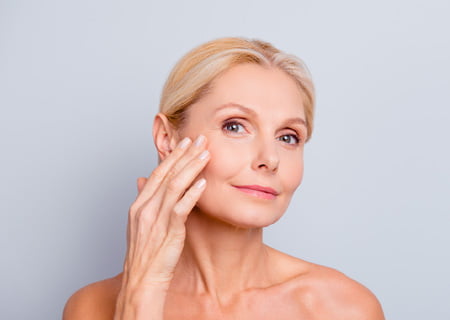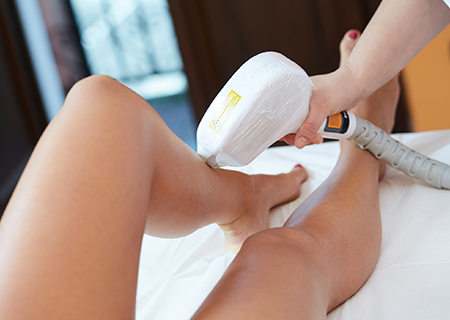Optimum Mobility Facelift vs Deep Plane Facelift: A Clear, Patient-First Comparison

Short take : both techniques can look wonderfully natural. They simply travel different roads to get there. At our clinic, Dr. Kristina Zakhary performs a refined controlled SMAS-based Optimum Mobility Facelift — a measured, anatomically respectful operation designed to mobilize what needs to move and leave the rest undisturbed. We do not perform deep plane facelifts.
Why these two get compared so often
Because they sit next to each other on the same shelf.
Both target jowls, jawline, and neck. Both can nudge the midface. And both, in skilled hands, avoid that “pulled” look people fear. The contrast is in the plane of dissection, the extent of release, and the feel of recovery. That’s where the choice starts to make sense.
A quick map of the layers (so the terms land)
Skin on top.
Under it, the
SMAS
— a fibrous layer connected to facial muscles.
Deeper still, retaining ligaments and fat pads that tether and shape the face.
People also search
Facelift surgery isn’t skin stretching; it’s mobilizing and repositioning the right layer(s), then redraping the skin without tension. Different philosophies approach that mobilization differently.
What the Optimum Mobility Facelift is (and why)
The core idea : plan the lift around your face’s intrinsic mobility, create surgically induced mobility only where needed, and secure everything at points of optimum mobility. It’s SMAS-based. It’s tailored. It’s precise.
- Enough lift to change what bothers you.
- No more dissection than necessary.
- Expression preserved. Your face should still behave like your face.
In real life that means a firm, cleaner jawline, softened jowls, a neck that matches the face — and the calm, natural animation people compliment without quite knowing why.
House position : we do not offer deep plane facelifts. Not because deep plane is “wrong,” but because most concerns we see — jowls, jawline, neck — respond beautifully to the Optimum Mobility controlled SMAS-based work when it’s planned around mobility rather than maximal release.
What a deep plane facelift is
Deep plane surgery releases key retaining ligaments and lifts beneath the SMAS, often moving cheek, jowl, and jawline as one unit. Advocates highlight midface fullness and softening of the nasolabial fold in selected faces. The trade-off? It’s a broader dissection. More structures to navigate. Longer, more intricate work. For certain anatomies and priorities, that’s a reasonable path. For many others, it’s simply more than you need.
The practical differences you actually feel
-
Where the power lands
.
Deep plane facelift can shine through the central midface. The Optimum Mobility (SMAS) approach is exceptionally strong for jawline, jowls, and neck — the most common trio on patient wish-lists. -
How natural looks natural
.
Both can avoid “pulled.” Optimum Mobility gets there by repositioning structure with a measured footprint, so expressions stay easy and familiar. -
Dissection footprint
.
Deep plane = deeper, wider release. Optimum Mobility = targeted releases in the SMAS, less undermining in many cases. -
OR time and recovery feel
.
More dissection often means more operative time and a different recovery curve. With Optimum Mobility, patients frequently describe a calmer, more predictable early healing period. -
Risk attitude
.
Any facelift carries risk. A philosophy that achieves the goal with less tissue disruption can be appealing when your priorities live in the lower face and neck.
Side-by-side: Optimum Mobility vs Deep Plane
| What you care about | Optimum Mobility Facelift (Controlled SMAS-based) | Deep Plane Facelift |
|---|---|---|
| Primary plane | SMAS layer with targeted releases; skin redraped with minimal tension | Beneath the SMAS with broader ligament release |
| Signature strengths | Jawline clean-up, jowl control, neck refinement; natural animation | Midface fullness and fold softening in selected anatomies |
| Footprint | Measured dissection; mobility only where needed | Deeper, wider dissection; unit lifting of tissues |
| Recovery feel | Often steady and predictable; “socially comfortable” relatively soon | Can be longer/denser early on depending on the case |
| Philosophy here | Standard approach; deep plane not offered | Considered in the field, but not our practice |
“Which one is better?” The answer nobody loves but everybody needs
There isn’t a universal winner. There’s your anatomy, your goals, and your tolerance for how much surgical release you want to buy to reach those goals. If your main complaints sit along the jawline and down the neck — and you want your face to move like itself — SMAS-based Optimum Mobility is often the right first conversation. If your central midface has truly dropped and cheek volume is the number-one issue, deep plane may be discussed in the broader field. Here, we focus on the approach that fits the majority of patient goals with a controlled footprint.
How we plan your result (and keep it honest)
- Mobility mapping. We examine how your tissues actually move. Not just in a mirror. In motion.
- Targeted release. If a region is stuck, we free it — no more, no less.
- Vectoring and fixation. Lift along vectors that sharpen the jawline and smooth the neck without changing who you are.
- Skin as a passenger. Redrape without tension so scars mature nicely and the look stays soft.
Small choices add up to big differences: incision design, drain decisions, hemostasis, closure. Craft matters.
Recovery, realistically
- Week 1–2 : swelling, bruising, and that “tighter at night” feeling are common. Short walks. Sleep elevated. Check-ins.
- Around week 3 : most people feel socially comfortable; the last traces hide easily with hair, frames, or makeup.
- Weeks 6–8 and beyond : refinement. The face softens into its new contours. Scars settle. Friends start saying, “Did you sleep?” — which is the whole point.
If there’s a milestone event, pad the timeline. Breathing room reduces stress and photographs better than any concealer.
Safety first (always)
No facelift is risk-free. Hematoma, infection, temporary nerve changes, scar concerns — they’re real, and we talk about them upfront. Our bias is simple: get the lift you need with the least unnecessary dissection, keep hemostasis meticulous, and guide aftercare closely. Sensible surgery. Sensible recovery.
Myths, Clarified
-
“Deep plane is always superior.”
Not for everyone. It’s powerful in the right face. In many others, targeted SMAS work delivers the exact look you want — without going deeper. -
“SMAS looks pulled.”
Not when the SMAS is doing the work and the skin is just along for the ride. “Pulled” happens when skin is the hero. Here, it isn’t. -
“One technique lasts forever; the other doesn’t.”
Longevity belongs to tissue quality, surgical planning, sun habits, and time. A well-executed Optimum Mobility Facelift is durable. So is any well-executed operation.
Who typically chooses Optimum Mobility
People who point to the mirror and circle three things: jowls, jawline, neck, chin-neck angle. People who want to look rested, not different. People who like the idea of controlled mobilization and keeping facial expression easy and familiar. If that sounds like you, you’re in the right lane.
Ready to see your own map?
Bring your priorities and your timeline. We’ll assess your facial mobility, show what a controlled Optimum Mobility Facelift can do for your contours, and build a plan that respects both your anatomy and your calendar. If you’ve been told you “must” have a deep plane facelift, come in anyway — second looks are healthy, and the gentler route might be the exact one you wanted all along.

